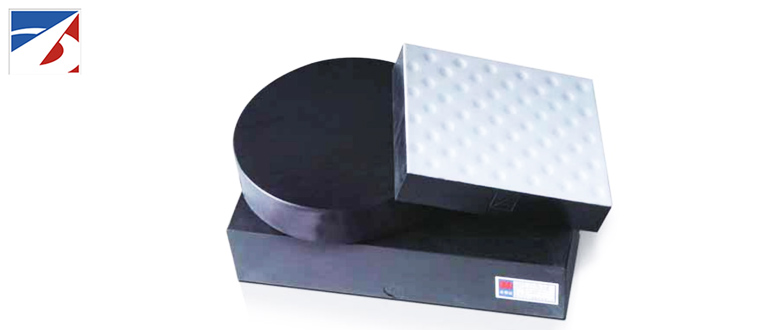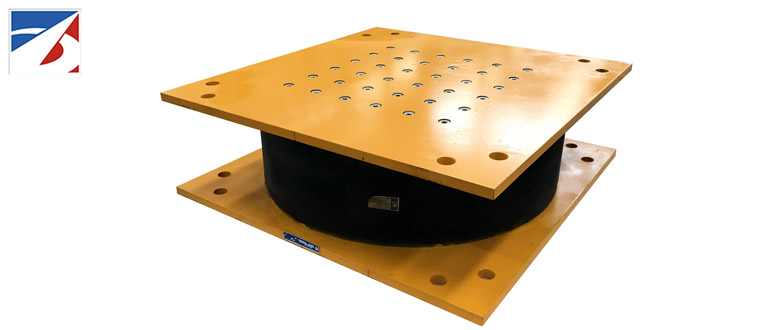elastomeric rubber bearing pad

Steel Edge Type Rubber Water Stop for Concrete Structure
2019年3月29日
Rubber Dam
2019年4月8日elastomeric rubber bearing pad

Elastomeric Rubber Bearing Pad
Structure and performance of elastomeric rubber bearing pad
Elastomeric rubber bearing pad(Hereinafter reference as to rubber bearing) is formed by vulcanizing and adhering multi¬layer rubber sheets and thin steel plates, with enough vertical stiffness, the counter force of the upper structure can be reliably delivered to the abutment; and it has better elasticity to adapt to the rotation of beam end; also the bigger shearing deformability can meet horizontal displacement of the upper structure.
Adhere one layer of PTFE sheet which thickness is 2-3mm on the surface of the above elastomeric rubber bearing pad, then it is made into a sliding PTFE elastomeric rubber bearing pad(Hereinafter reference as to PTFE rubber bearing). In addition to vertical stiffness and elastic deformation, be capable of bearing vertical load and adapting to the rotation of beam end,
Apart from vertical stiffness and elastic deformation, it can bear vertical load and adapt to the rotation of beam end. The low friction coefficient of PTFE sheet enables the beam end to slide freely on the PTFE sheet surface, and the horizontal displacement is not limited. It is especially suitable for the bridge with medium-small load and great displacement.
The rubber bearing has features of better technical performance, simple structure, low price, no maintenance, easy replacing, buffering shock insulation, low building height and the like, so it is widely applied and popular in bridge industry.
Classification and representation method of rubber bearings
I. Rubber bearing is classified as follows according to the structure form:

II. PTFE rubber bearing is classified as follows according to the suitable rubber temperature:
■ Neoprene rubber type (CR)
Applicable temperature: -25℃~+60℃)
■ Natural rubber type (NR)
Applicable temperature: -40℃~+60℃
III. Representation method of bearing code:

Rubber classification
Normal temperature bearing adopts neoprene rubber (CR); and the cold-resistant bearing adopts natural rubber (NR).
Boundary dimension
Rectangle La x Lb x t-mm i circle d x t-mm
Code form
F* represents PTFE rubber bearings;
without from code represents common rubber bearings
Name Code
GJZ represents rectangle bearings

Example: GJZ300 x 400 x 47 (CR) represents a common neoprene rubber bearing, the size of short side is 300mm; the size of long side is 400mm; thickness is 47mm.
Applicatipon range of rubber bearings
Common rubber bearing is suitable for the bridge with span less than 30m and small displacement. Different plane shapes are suitable for different span structures: orthogonal bridge applies to rectangular bearings; curved bridge, skew bridge and cylinder pier bridge applies to circular bearings.
PTFE rubber bearing is suitable for big-displacement bridge with big span, continuous multi-span and simply supported beam continuous plate. It also can be used as the sliding block in continuous beam pushing and T-shaped beam shift. The application of rectangular and circular PTFE rubber bearing is the same as the rectangular and circular common rubber bearing.

